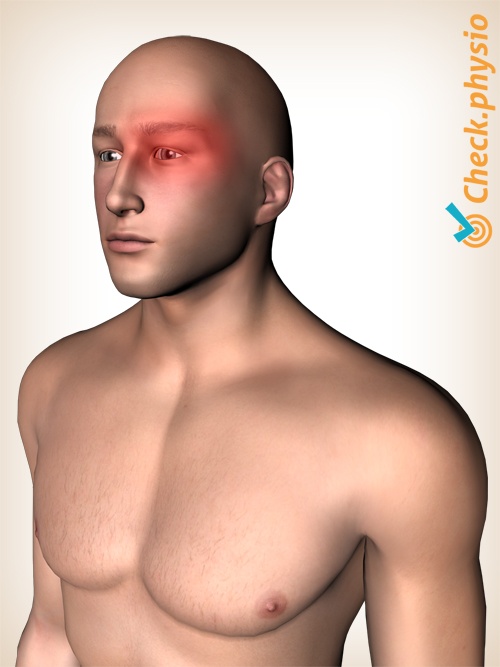Cluster headache
Horton's neuralgia
Cluster headache is an extremely painful form of headache. It is also called 'Horton's neuralgia'. The pain is usually located around the eye.

Other forms of headache include tension headache, medication-induced headache, migraine and cervicogenic headache.
Description of the condition
The headache can be chronic or episodic. Episodic cluster headaches cause extremely severe attacks of headache over a period of two weeks to three months. These headaches can occur up to eight times per day. In the chronic form of the condition there are no pain-free periods. The attacks can occur every day. In most cases the symptoms occur episodically.
Cause and origin
It is thought that the hypothalamus and other regions of the brain play a significant role during cluster headache attacks. Not much else is known about the exact cause.
Signs & symptoms
- Severe, sharp, stabbing pain, usually around the eye.
- The pain is felt on one side.
- An attack lasts 5 minutes to three hours.
- The symptoms often occur during sleep.
- The patient usually does not know what to do and becomes agitated. Patients can start walking around or crawling.
- The eye can start to tear up and a runny nose or blocked nose can occur.
Diagnosis
The diagnosis of a cluster headache is made on the basis of the patient's story. In general, the symptoms themselves provide sufficient information to rule out other causes of the headache. Additional examinations are therefore rarely necessary.
Treatment
The treatment usually consists of administering medication. In severe cases the patient can opt for surgery or a nerve block.
Exercises
You can check your symptoms using the online physiotherapy check or make an appointment with a physiotherapy practice in your area.
References
Nugteren, K. van & Winkel, D. (2012). Onderzoek en behandeling van de nek. Houten: Bohn Stafleu van Loghum.


